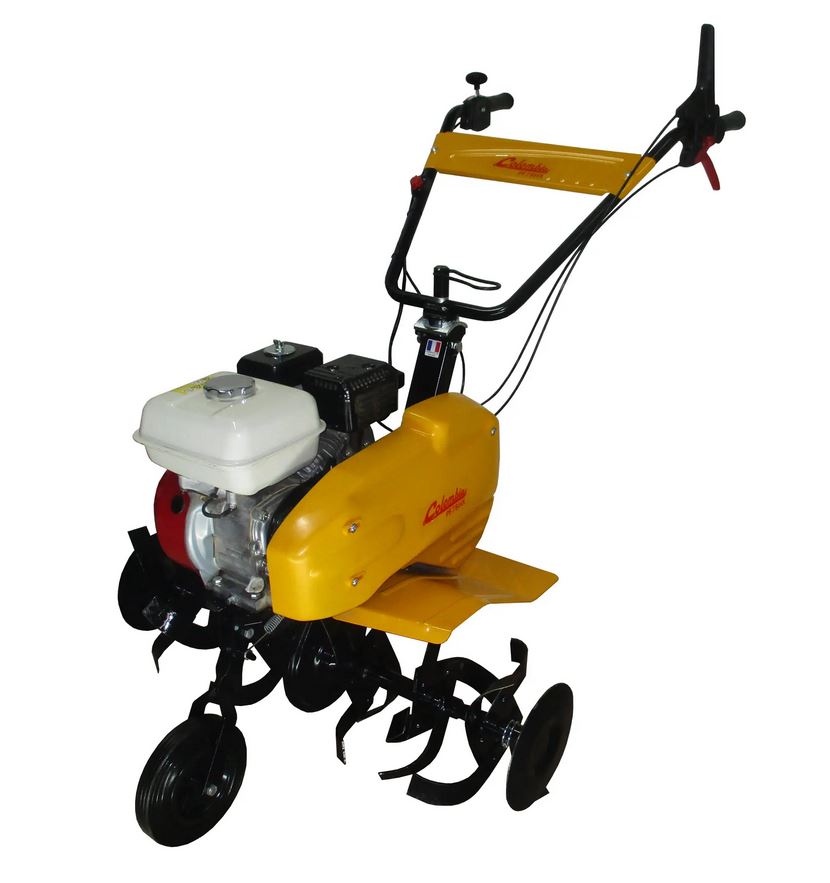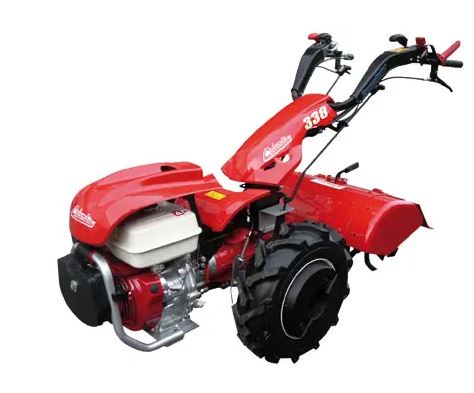The arrival of a new season is the right time to prepare your soil before sowing. There are various tools available for this purpose, but they require a little “elbow grease”. To avoid back pain, you can get a rotovator or a tiller, they allow you to plow and turn the soil more efficiently than with a spade. If these terms are sometimes used to designate the same machine, these two tools do not have the same function. So, are you more of a rotovator or a tiller? Our expert gives you his advice to make the right choice!
When you have read this article you will know all about choosing your gear 😉
Tiller or Rotary Hoe?
They are both motorized tools used to turn over the soil, but where a rotovator is equipped only with tines to work the soil on the surface, a rotovator has greater versatility (wheels, plow, snow blade, trailer).
The Rotary Hoe

The rotovator is commonly used by individuals, it is ideal for surface work, but can not perform plowing. A rotovator is lighter, more maneuverable and also requires
and requires less maintenance than a tiller. It is suitable for work up to 1000 m² (depending on the model), it is used to stir and crumble the soil.
There are electric or thermal tillers, to be preferred in vegetable gardens far from any power outlet or for work requiring a little more power. On some models, there is a reverse gear that simplifies maneuvers. You can find at Mr Jardinage a wide range of tillers such as the Colombia PF78HX which will meet the expectations of individuals passionate about gardening thanks to its efficiency on an area of up to 1000m2.
The Tiller

A motor tiller is suitable for heavier work and larger plots of land (over 1000 m²). Its main advantage is that it can do ploughing work. When you need to redo a lawn or prepare a vegetable garden. Or when you want to clean your land for preparation work or in anticipation of sowing.
Another advantage of the tiller is that it has the power to work on wet soil, making life easier for the gardener.
A tiller mounted on wheels, simplifies the maneuvering of the device, and thus requires a more powerful engine. The plow is the main asset of a rototiller, because it allows to turn the soil in depth, which is not done by the tiller of a rototiller.
Plowing is usually done in the fall, while aerating the soil with a rototiller is done in the spring.
The 338 PS tiller with its Honda engine will be ideal for the most professional of you thanks to its 660 mm rotating rear tiller with extension.
Thermal vs. electric tillers
Electric hoe
The electric tiller is practical for the maintenance of your flowerbeds or flowerbeds up to 200m2 because it must be connected to an electrical network. With the help of its high-speed rotors, the tiller can easily stir up the soil and facilitate the penetration of seedlings or fertilizer.
The added bonus is that it generally makes little noise.
An electric rotovator is best suited for small to medium-sized gardens and/or vegetable plots, approximately 200 m². Beyond that, you will be better off investing in a combustion engine hoe.
Thermal rotovator
As its name suggests, the combustion engine powered tillers run on a gasoline engine, so they are autonomous. It has a 4-stroke engine with a single-speed centrifugal clutch, which gives it more power than an electric tiller. In addition, some models are equipped with a reverse gear. With their fuel-powered engines, combustion engine tillers have more powerful and robust engines.
As you can see, this machine is more suitable for semi-professional use. Especially since their lifespan is generally much longer than electric models.
Solid and durable, the thermal hoe works on surfaces up to 2000 m², which is significant if you have a very large surface to work.
The characteristics to choose between a rotovator or a tiller
Working width:
It can vary between 35 and 85 cm. Therefore, the wider the working width, the more time you will save. Thus, the size depends on the number of cutters (from 2 to 6). Generally, tillers have a greater working width.
Engine power:
The choice of engine will depend on the size and nature of your land. For less than 100 m², choose an engine of up to 4 hp (125 – 150 cc). For larger grounds, prefer a more powerful engine above 5 hp (above 160 cc).
The harder your land is to work, the more powerful the engine will be!
Plant protection discs:
Since a garden is rarely a flat surface without obstacles, these discs will protect your beds from trajectory errors.
Offset handlebar:
It greatly increases the maneuverability of the machine.
The diameter of the cutters:
These will determine the working depth of your tool. The larger the diameter, the deeper the cutters will penetrate the soil.
The reverse gear makes it easier to maneuver, such as turning.
Regardless of the equipment you choose, tillers can last up to ten years with proper maintenance.

